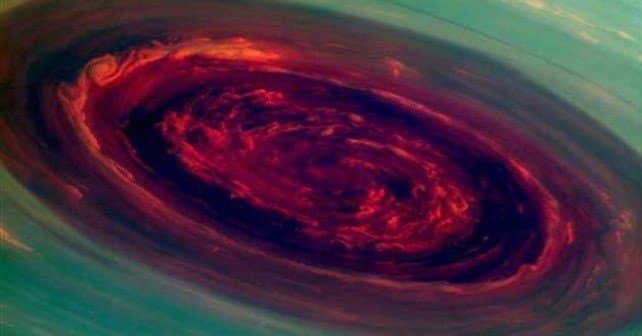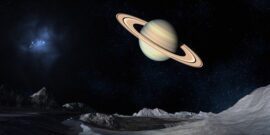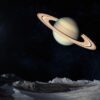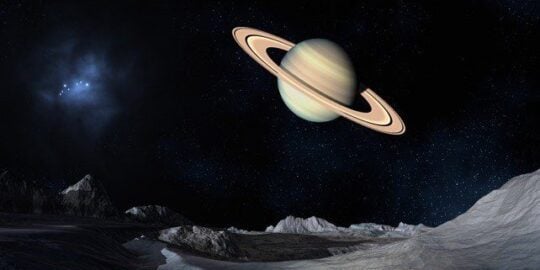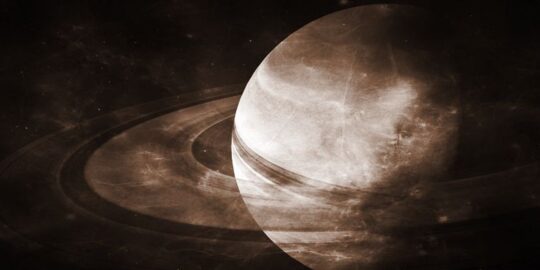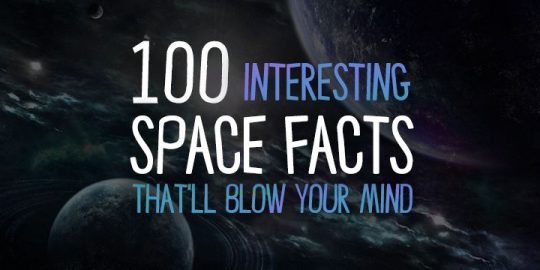The hurricane-like storm on Saturn is one of NASA’s most compelling factual discoveries about a planet within our solar system to-date.
First sighted by the NASA space-craft Cassini, this huge storm on Saturn heavily resembles one of Earth’s hurricanes.
Using infrared and red wavelengths, and falsely colored for detail, the picture was taken at a height of 420,000 kilometers (or 260,000 miles)!
Earth’s hurricanes usually have a small eye surrounded by a larger outer band.
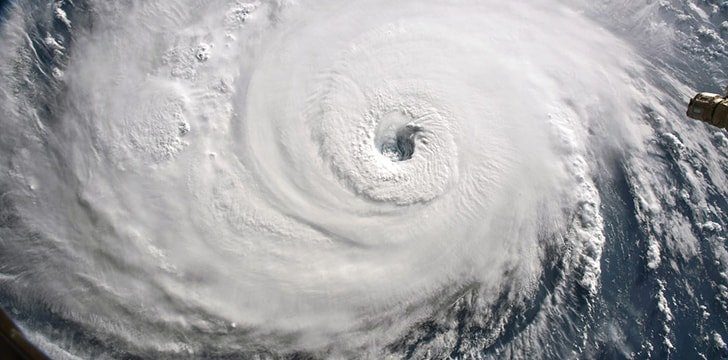
However, the center of the storm on Saturn is approximately 2012 kilometers (1,250 miles) wide.
That’s the distance between Dallas and Washington D.C. or big enough to cover the United Kingdom twelve times over!
This is twenty times larger than the center of an average Earth hurricane and the outer band can be seen for several thousand miles more.
The wind speeds are highest in what is known as the “center eye” of the hurricane.
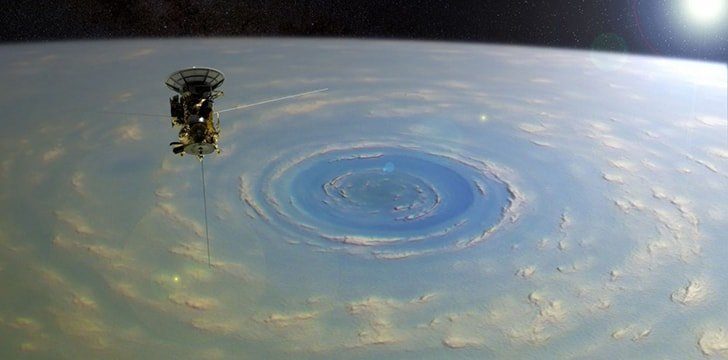
Usually in a hurricane the wind speeds are highest in what is known as the “center eye” of the hurricane and weakest near the edges of the outer ring.
The wind speeds on the outer edge of Saturn’s hurricane range up to 530 kmph (330 mph).
In the center eye of the storm they are four times faster than the fastest recorded winds on Earth, these being the winds of hurricane Camille that hit the United States in 1996 that measured up to roughly 305 kph (190 mph).
Usually a hurricane feeds off water vapor from the warm ocean waters on Earth, which is what gives a hurricane its needed energy to develop.
Yet there is no large body of water on the planet Saturn, however, and its storm feeds off the small amounts of water vapor found in Saturn’s hydrogen atmosphere.
Saturn’s hurricane is stuck…
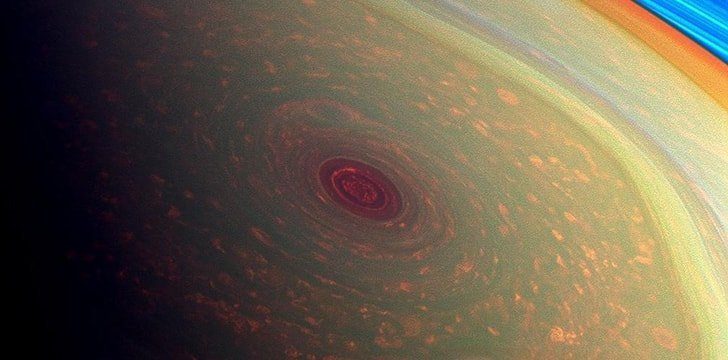
Earth’s hurricanes are also usually formed in the tropical and move North due to something known as the Coriolis effect in which the Earth’s rotation imparts an acceleration which pulls the storm towards the poles, chiefly the North Pole.
Saturn’s storm is already situated over the planet’s North Pole and therefore is stationary, with nowhere else to go.
This has led NASA scientists to believe that the storm on Saturn could have been raging for years.
Only in 2009 did the Sun once again start to shine upon Saturn’s Northern Hemisphere once again, allowing Cassini to snap pictures on the massive storm.
As it takes Saturn 29 (Earth) years to orbit the Sun, the entire Northern Hemisphere of the planet has been in total darkness since Cassini’s 2004 arrival to the planet.
These images of Saturn are the first sunlit images of the planet since the pictures taken by the Voyager 2 craft during its passing of the planet in 1981.
NASA scientists will continue to study the terrestrial hurricane-like storm.
Despite the fact that it differs in size, strength and energy source to an Earth hurricane, it carries similar characteristics such as a central eye without clouds, a counter-clockwise spin in the Northern Hemisphere and high clouds that circle the storm’s eye.

